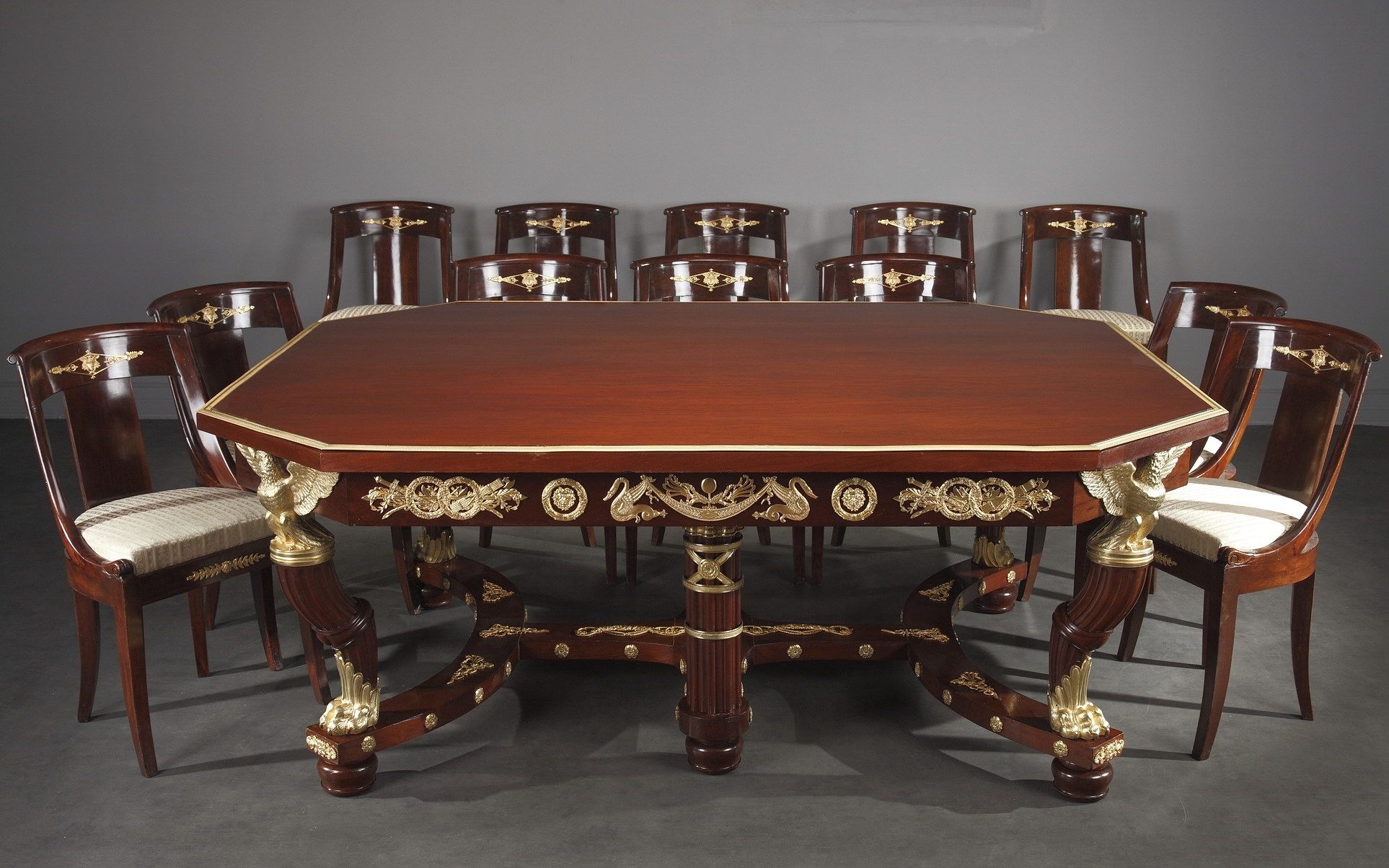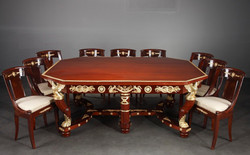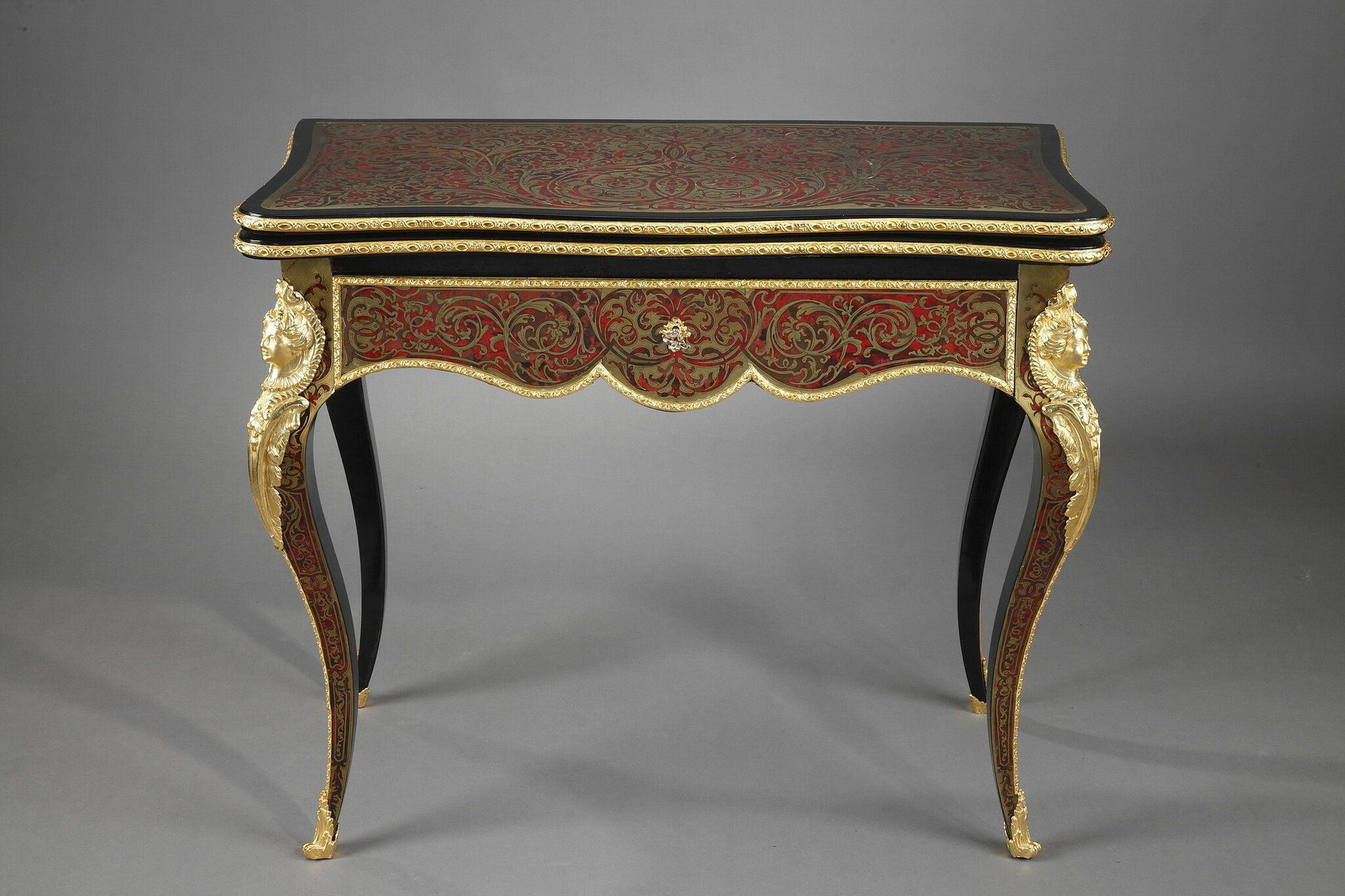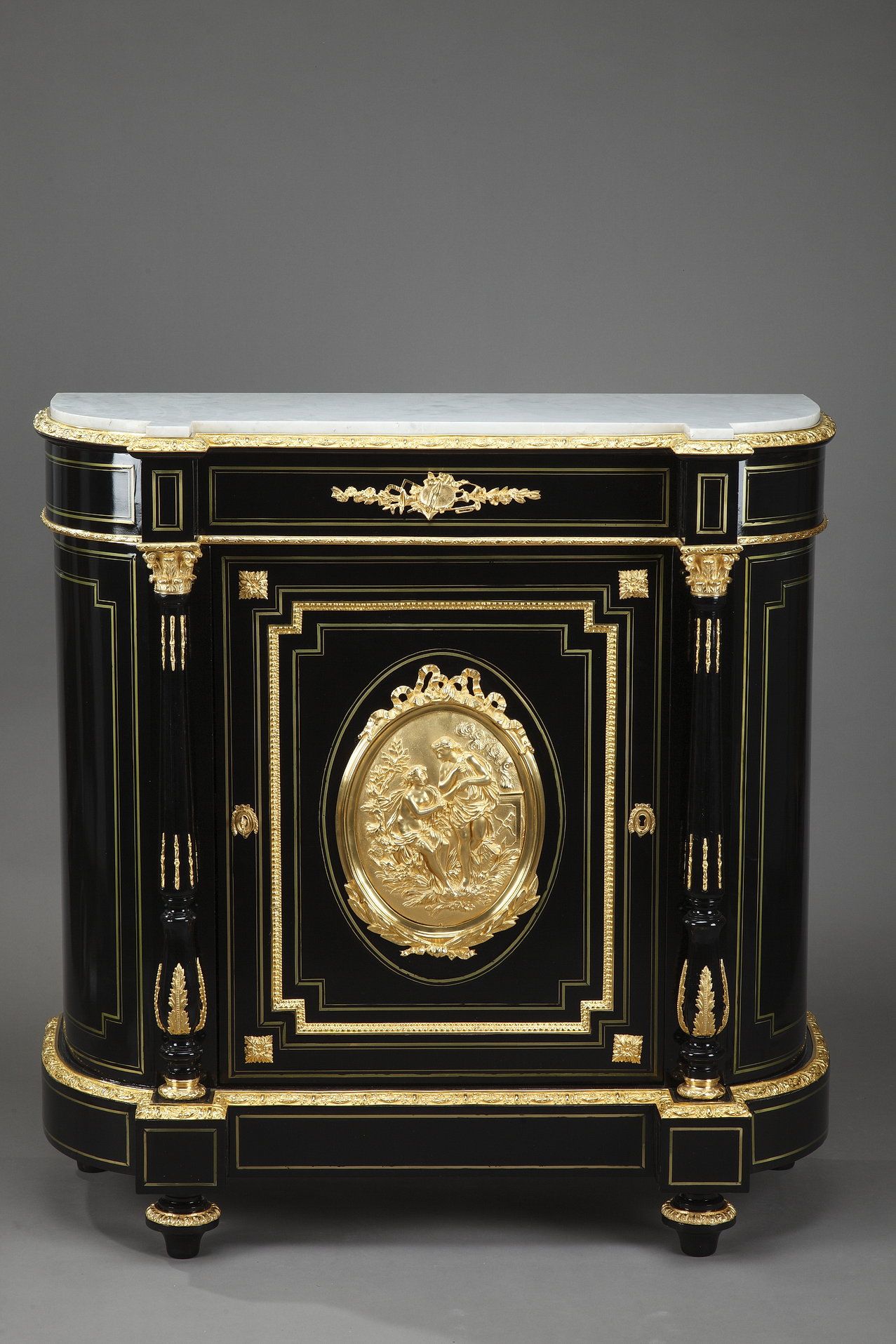Napoleon III tables and pedestal tables
28.03.21
The Napoleon III style, which spanned the period from 1852 to around 1870, was characterized by a broad mix of styles from the 16th to 18th centuries. A large number of Boulle-style inlaid tortoiseshell and metal furniture, Louis XV and Louis XVI salons, Renaissance and Empire-style dining rooms were produced. Small tables, such as guéridons and consoles, are particularly popular. Made of black lacquered wood, ebony, walnut or rosewood, tables have a variety of uses, and their aesthetics are indebted to antique styles.
Dining room tables
Large dining room tables faithfully reproduce Louis XVI or Empire tables, and more rarely, Renaissance tables. The Louis XVI style, under the impetus of Empress Eugenie, a great admirer of Marie-Antoinette, imitated Louis XVI furniture to perfection, giving this style the name "Louis XVI-Imperatrice".
 Set of Empire-style furniture in mahogany and gilt bronze
Set of Empire-style furniture in mahogany and gilt bronze
Our Empire-style dining room features turn-of-the-century shapes and decorative motifs: gondola chairs, eagles, swans and rhombuses, typical motifs of the Directoire and Empire styles.
Furniture in the André-Charles Boulle style are made in small and large sizes and the work is sometimes exceptional. Boulle marquetry is a overlay of tortoiseshell and brass decorations, generalized by the famous cabinetmaker of King Louis XIV. The principle of this marquetry is the cutting with a saw of a plate of tortoiseshell and a plate of brass on top of each other, the result being that one obtains two backgrounds and two decorations to be plated in "first part" (tortoiseshell background with brass ornamentation) and in "counterpart" (brass background with tortoiseshell ornamentation). Several famous cabinetmakers under Napoleon III devoted themselves to the creation of Boulle-style furniture, such as Joseph Cremer (1811-1878) and Charles-Guillaume Diehl (1811-1885).
Les Guéridons
During the Second Empire, there was a clear predilection for small tables with a variety of uses: pedestal tables, consoles, nesting tables - invented at this time - and "working" or " tilting" tables. Most of these pieces are made of black lacquered wood, and decorated with polychrome paintings (flowers, chinoiseries or Renaissance scrolls). Some imitate earlier styles: Renaissance and Louis XVI in particular.
Many tilting pedestal tables or tilting tables are made of black lacquered wood or inlaid papier-mâché. Their round or rectangular top is hinged to a column mounted on a finely carved tripod. The ensemble is always richly decorated with inlays or polychrome paintings.
Black lacquered wood
Napoleon III cabinetmakers used dark woods such as ebony - for Renaissance and Louis XV inspired furniture or for imitations of the Boulle style. Almost all types of wood were used during this period, but black lacquered wood was the most enduring. It was mainly used for small furniture with inlays or painted decorations. Black lacquered furniture painted with polychrome flower bouquets are representative of this period.


 Boulle marquetry table
Boulle marquetry table
